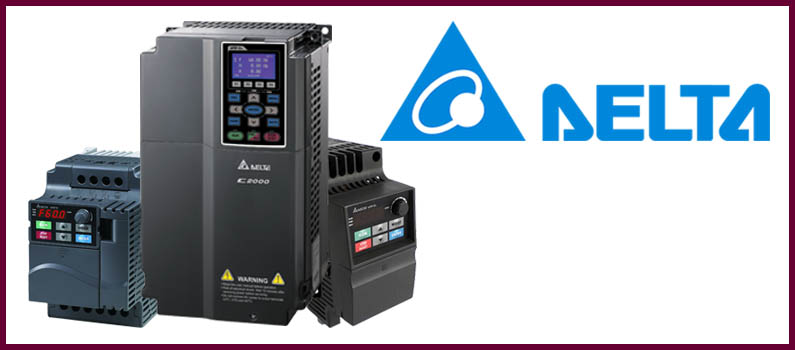1. EXECUTIVE SUMMARY
- CVSS v3 7.8
- ATTENTION: Low skill level to exploit
- Vendor: Delta Electronics
- Equipment: TPEditor
- Vulnerabilities: Out-of-bounds Read, Stack-based Buffer Overflow, Heap-based Buffer Overflow, Write-what-where Condition, Improper Input Validation
2. RISK EVALUATION
Successful exploitation of these vulnerabilities could allow an attacker to read/modify information, execute arbitrary code, and/or crash the application.
3. TECHNICAL DETAILS
3.1 AFFECTED PRODUCTS
The following versions of TPEditor, a programming software for Delta text panels, are affected:
- TPEditor Versions 1.97 and prior
3.2 VULNERABILITY OVERVIEW
3.2.1 OUT-OF-BOUNDS READ CWE-125
An out-of-bounds read may be exploited by processing specially crafted project files. Successful exploitation of this vulnerability may allow an attacker to read/modify information, execute arbitrary code, and/or crash the application.
CVE-2020-16219 has been assigned to this vulnerability. A CVSS v3 base score of 7.8 has been assigned; the CVSS vector string is (AV:L/AC:L/PR:N/UI:R/S:U/C:H/I:H/A:H).
3.2.2 STACK-BASED BUFFER OVERFLOW CWE-121
A stack-based buffer overflow may be exploited by processing a specially crafted project file. Successful exploitation of this vulnerability may allow an attacker to read/modify information, execute arbitrary code, and/or crash the application.
CVE-2020-16221 has been assigned to this vulnerability. A CVSS v3 base score of 7.8 has been assigned; the CVSS vector string is (AV:L/AC:L/PR:N/UI:R/S:U/C:H/I:H/A:H).
3.2.3 HEAP-BASED BUFFER OVERFLOW CWE-122
A heap-based buffer overflow may be exploited by processing a specially crafted project file. Successful exploitation of this vulnerability may allow an attacker to read/modify information, execute arbitrary code, and/or crash the application.
CVE-2020-16223 has been assigned to this vulnerability. A CVSS v3 base score of 7.8 has been assigned; the CVSS vector string is (AV:L/AC:L/PR:N/UI:R/S:U/C:H/I:H/A:H).
3.2.4 WRITE-WHAT-WHERE CONDITION CWE-123
A write-what-where condition may be exploited by processing a specially crafted project file. Successful exploitation of this vulnerability may allow an attacker to read/modify information, execute arbitrary code, and/or crash the application.
CVE-2020-16225 has been assigned to this vulnerability. A CVSS v3 base score of 7.8 has been assigned; the CVSS vector string is (AV:L/AC:L/PR:N/UI:R/S:U/C:H/I:H/A:H).
3.2.5 IMPROPER INPUT VALIDATION CWE-20
An improper input validation may be exploited by processing a specially crafted project file not validated when the data is entered by a user. Successful exploitation of this vulnerability may allow an attacker to read/modify information, execute arbitrary code, and/or crash the application.
CVE-2020-16227 has been assigned to this vulnerability. A CVSS v3 base score of 7.8 has been assigned; the CVSS vector string is (AV:L/AC:L/PR:N/UI:R/S:U/C:H/I:H/A:H).
3.3 BACKGROUND
- CRITICAL INFRASTRUCTURE SECTORS: Critical Manufacturing
- COUNTRIES/AREAS DEPLOYED: Worldwide
- COMPANY HEADQUARTERS LOCATION: Taiwan
3.4 RESEARCHER
Kdot, kimiya of 9SG Security Team, Justin Taft and Chris Anastasio working with Trend Micro’s Zero Day Initiative reported these vulnerabilities to CISA.
4. MITIGATIONS
Delta Electronics recommends affected users update to the latest version of Delta Industrial Automation TPEditor, Version 1.98
CISA recommends users take defensive measures to minimize the risk of exploitation of this vulnerability. Specifically, users should:
- Minimize network exposure for all control system devices and/or systems, and ensure that they are not accessible from the Internet.
- Locate control system networks and remote devices behind firewalls, and isolate them from the business network.
- When remote access is required, use secure methods, such as Virtual Private Networks (VPNs), recognizing that VPNs may have vulnerabilities and should be updated to the most current version available. Also recognize that VPN is only as secure as the connected devices.
CISA reminds organizations to perform proper impact analysis and risk assessment prior to deploying defensive measures.
CISA also provides a section for control systems security recommended practices on the ICS webpage on us-cert.gov. Several recommended practices are available for reading and download, including Improving Industrial Control Systems Cybersecurity with Defense-in-Depth Strategies.
Additional mitigation guidance and recommended practices are publicly available on the ICS webpage on us-cert.gov in the Technical Information Paper, ICS-TIP-12-146-01B–Targeted Cyber Intrusion Detection and Mitigation Strategies.
Organizations observing any suspected malicious activity should follow their established internal procedures and report their findings to CISA for tracking and correlation against other incidents.
CISA also recommends users take the following measures to protect themselves from social engineering attacks:
- Do not click web links or open unsolicited attachments in email messages.
- Refer to Recognizing and Avoiding Email Scams for more information on avoiding email scams.
- Refer to Avoiding Social Engineering and Phishing Attacks for more information on social engineering attacks.
No known public exploits specifically target these vulnerabilities. These vulnerabilities are not exploitable remotely.
Source:


Stay connected